Industrial gas-fired boilers are popular for their high combustion efficiency, clean emissions, and ease of control, making them a preferred choice in food processing, pharmaceuticals, textiles, and manufacturing. However, while the upfront cost may be lower than more complex systems, the long-term operating expenses—especially fuel consumption—often make up the majority of the total investment. Understanding both initial capital outlay and lifecycle costs is essential for accurate budgeting and strategic planning.
The upfront costs of an industrial gas-fired boiler include the boiler unit, burner system, gas supply infrastructure, installation, control systems, and emissions compliance equipment. Long-term costs consist of natural gas consumption, scheduled maintenance, periodic burner tuning, water treatment, emissions monitoring, and potential retrofits to meet future environmental standards. Although these boilers generally have lower maintenance and emission control costs than coal or oil systems, fuel cost remains the dominant long-term expense.
Here’s a detailed look at how the cost structure breaks down over time.
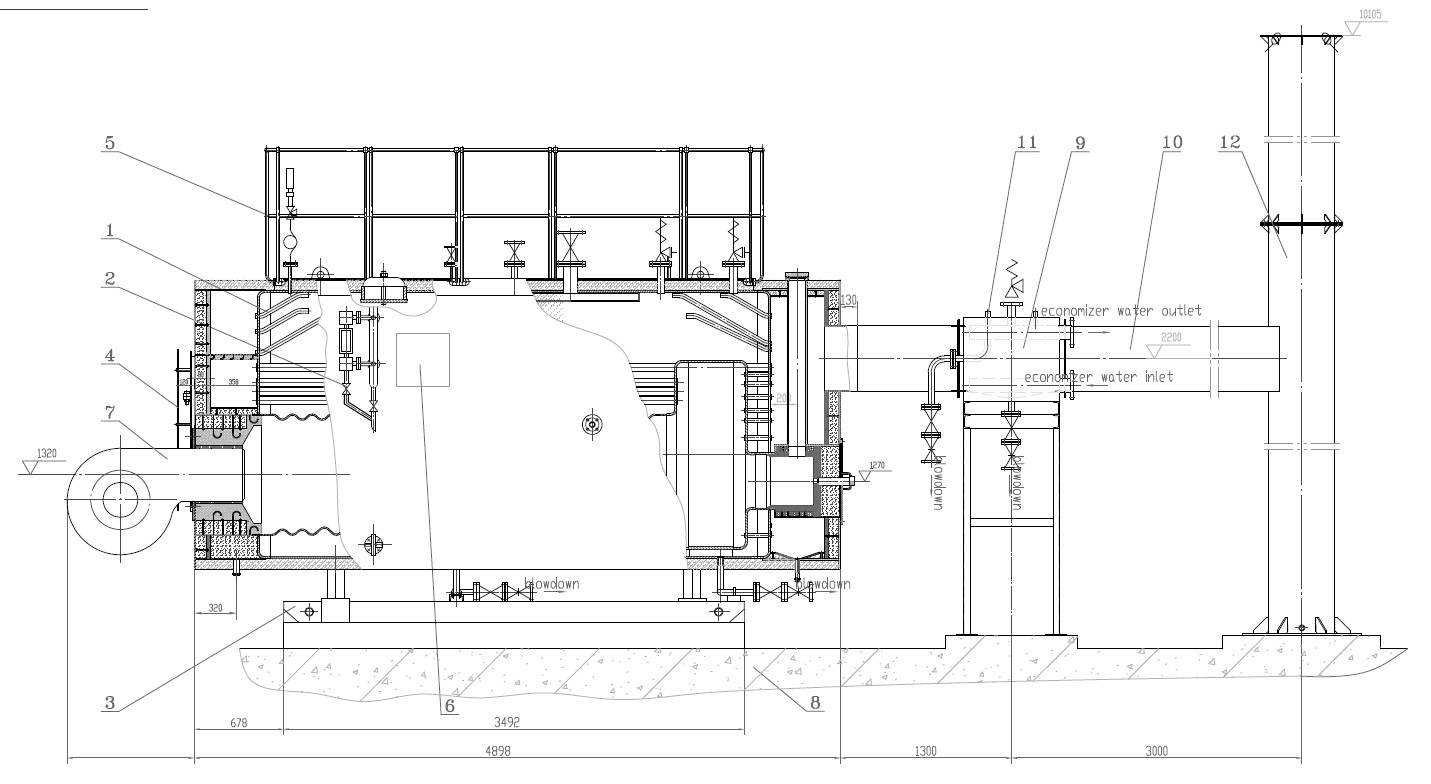
What Are the Typical Upfront Costs of Purchasing and Installing a Gas-Fired Boiler?
When planning to install a gas-fired boiler in an industrial setting, focusing solely on the price of the boiler unit can severely understate the true upfront investment. The total capital cost includes not only the boiler shell but also essential auxiliary equipment, installation labor, control systems, site modifications, and compliance requirements. These factors collectively form the turnkey cost, which can range from hundreds of thousands to several million dollars depending on boiler capacity, pressure, automation level, and regulatory environment.
The typical upfront cost for purchasing and installing an industrial gas-fired boiler ranges from $250,000 to over $2 million, depending on size, pressure, efficiency level, and included auxiliary systems. This includes the boiler unit itself, burner, fuel train, controls, flue gas stack, water treatment systems, electrical integration, site preparation, and mechanical labor. On average, installation and auxiliary components double or triple the base cost of the boiler. Accurate cost planning must account for these full-scope expenses to avoid budget overruns and delays.
A boiler’s sticker price is just the beginning—its installed cost tells the real story.
The total installed cost of a gas-fired industrial boiler is typically 2 to 3 times the base equipment cost.True
Auxiliaries like burners, controls, piping, and installation labor add significantly to total capital outlay.
📦 Major Capital Cost Components
| Component | Typical Share of Total CAPEX | Description |
|---|---|---|
| Boiler Unit (Shell & Drum) | 25–35% | Pressure vessel, heat exchangers |
| Gas Burner & Fuel Train | 10–15% | Modulating burner, gas shutoff valves, regulator |
| Control System (PLC, HMI) | 5–10% | Safety logic, touchscreen, O₂ trim, alarms |
| Flue Gas Stack & Draft Equipment | 5–8% | Stainless stack, dampers, draft fans |
| Feedwater & Water Treatment | 8–12% | Pumps, softener, RO system, condensate tank |
| Electrical Integration | 3–7% | Power panels, MCCs, wiring, lights |
| Mechanical Installation & Labor | 10–20% | Rigging, welding, insulation, commissioning |
| Site Work & Foundations | 3–6% | Concrete pads, pipe racks, platforms |
| Startup, Permits, Inspections | 1–3% | Code compliance, emissions test, documentation |
These categories cover all expenses required to bring the system online.
📊 Cost Range by Boiler Size (Turnkey Installation)
| Boiler Size (Steam Output) | Typical Installed Cost (USD) | Example Application |
|---|---|---|
| 2 TPH | $250,000 – $450,000 | Small industrial laundry, process line |
| 5 TPH | $450,000 – $700,000 | Food, beverage, chemical plants |
| 10 TPH | $750,000 – $1.2 million | Medium continuous production |
| 20 TPH | $1.4M – $2.2 million | Large manufacturing, district heating |
| 30 TPH | $1.8M – $2.8 million | Powerhouse, industrial campus |
High-efficiency condensing models or systems with emissions controls cost more.
🧪 Cost Breakdown Example: 10 TPH Gas-Fired Boiler
| Cost Element | Estimated Cost (USD) |
|---|---|
| Boiler Unit | $280,000 – $350,000 |
| Burner & Gas Train | $80,000 – $110,000 |
| Controls (PLC + Touchscreen HMI) | $60,000 – $85,000 |
| Feedwater Tank, Pumps, Softeners | $90,000 – $120,000 |
| Stack & Draft Fans | $50,000 – $70,000 |
| Installation Labor & Rigging | $160,000 – $220,000 |
| Electrical + Commissioning | $60,000 – $80,000 |
| Permits & Code Compliance | $10,000 – $20,000 |
| Total Turnkey Cost | ~$800,000 – $1.05M |
Every component must be properly sized and matched to local regulations and fuel infrastructure.
📋 Factors That Affect Capital Cost Range
| Factor | Impact on Cost |
|---|---|
| Boiler Pressure/Temperature | Higher spec = thicker steel, more control logic |
| Fuel Type (Natural vs. Biogas) | Biogas needs scrubbing, safety extras |
| Efficiency (Condensing vs. Non) | +10–20% CAPEX, lower fuel use |
| Automation Level | More sensors, SCADA, remote access |
| Site Conditions | Constrained sites = higher labor cost |
| Regulatory Requirements | NOₓ rules may mandate SCR/FGR |
Smart upgrades (e.g., economizer, O₂ trim) raise CAPEX but reduce fuel use by 5–10%.
Summary
The typical upfront cost of purchasing and installing a gas-fired industrial boiler ranges from $250,000 to over $2 million, depending on system size, performance goals, and auxiliary system complexity. The boiler unit may account for only 30–40% of total installed cost, with the remainder allocated to burners, water systems, control panels, labor, and compliance. A complete capital plan must reflect the true scope of installation, or risk underfunding and delays. For industrial steam generation, accurate budgeting begins by counting every pipe, panel, and pound of pressure that brings it to life.
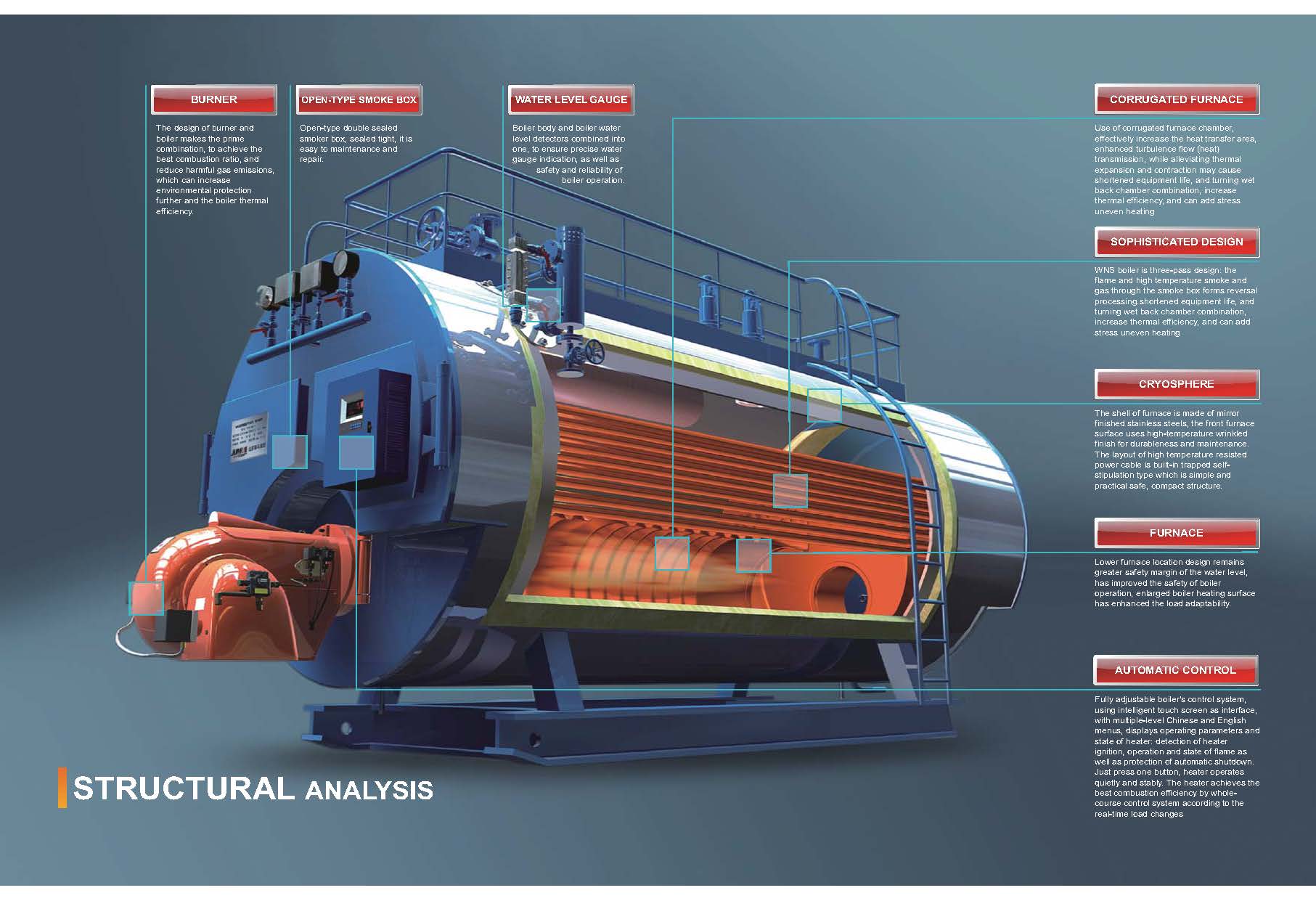
What Auxiliary Systems and Permits Add to the Capital Investment?
While a gas-fired industrial boiler is often promoted with a headline unit price, the true capital investment goes well beyond that number. To commission a compliant, safe, and fully functional boiler system, numerous auxiliary systems and permits are required—each with its own cost implications. These components ensure the boiler operates reliably, safely, and legally. Whether you’re budgeting for a new installation or a major upgrade, a full accounting of these secondary yet essential systems is crucial for accurate project budgeting and avoidance of regulatory delays.
Auxiliary systems and permits add 40–70% or more to the base cost of a gas-fired boiler system. These include the gas train and regulator system, feedwater and condensate return, blowdown management, flue stack and draft control, control panels and PLCs, safety interlocks, emissions monitoring, and necessary permits for air, gas, and pressure vessel operation. Failing to include these in your capital budget can lead to significant cost overruns, project delays, and non-compliance risks.
A gas-fired boiler is only as good as the systems that support it—and the permits that allow it to run.
Auxiliary systems and permitting typically increase the capital cost of gas-fired boilers by 40–70% beyond the boiler unit itself.True
These include essential support equipment and regulatory approvals needed to operate legally and safely.
📦 Key Auxiliary Systems That Add to CAPEX
| System | Purpose | Cost Range (USD) |
|---|---|---|
| Gas Train & Pressure Regulator | Controls and conditions fuel gas supply | $20,000 – $80,000 |
| Burner Management System (BMS) | Ensures safe ignition, shutdown, and interlocks | $30,000 – $70,000 |
| PLC & SCADA Controls | Boiler automation, data logging, alarms | $40,000 – $90,000 |
| Feedwater Pumps & Tank | Supplies treated water to boiler | $25,000 – $60,000 |
| Water Softener/RO Unit | Removes hardness to prevent scale | $20,000 – $50,000 |
| Deaerator or Condensate Tank | Removes O₂ to prevent corrosion | $30,000 – $80,000 |
| Blowdown System | Removes high-TDS water to control concentration | $10,000 – $30,000 |
| Flue Stack, Dampers, ID Fan | Exhausts combustion gases safely | $25,000 – $70,000 |
| Safety Valves, Instrumentation | Ensures safe operation under pressure | $10,000 – $30,000 |
| Economizer (optional) | Recovers flue gas heat to preheat feedwater | $40,000 – $100,000 |
These systems may double the installation cost, depending on boiler capacity and site complexity.
📋 Common Permits and Approvals Required
| Permit Type | Purpose | Typical Cost (USD) |
|---|---|---|
| Boiler Installation Permit | Local approval for pressure equipment | $1,000 – $5,000 |
| Air Emissions Permit (NOₓ/CO) | Mandated for combustion sources >1 MMBtu/hr | $2,000 – $10,000 |
| Natural Gas Supply Approval | Required from gas utility or energy agency | $1,000 – $3,000 |
| Pressure Vessel Inspection (State/Local) | Ensures compliance with ASME/API codes | $500 – $2,000/year |
| Occupational Safety Certification | Required for operator safety compliance | $2,000 – $6,000 |
| Building and Fire Code Reviews | Local zoning and fire department inspection | $1,000 – $3,000 |
Total permit and compliance costs typically range from $10,000 to $30,000, depending on jurisdiction.
🧪 Turnkey Project Budget Example: 10 TPH Gas-Fired Boiler
| Component | Estimated Cost (USD) |
|---|---|
| Boiler Unit | $320,000 |
| Burner + Gas Train | $90,000 |
| Feedwater & Softener System | $60,000 |
| Controls & PLC Interface | $75,000 |
| Stack + Draft Fan System | $60,000 |
| Blowdown Tank + Valves | $20,000 |
| Safety Interlocks + Sensors | $25,000 |
| Mechanical & Electrical Labor | $160,000 |
| Permits & Commissioning | $20,000 |
| Total Turnkey CAPEX | ~$830,000 |
Boiler unit is <40% of total project cost—auxiliaries and compliance make up the majority.
📊 Auxiliary Systems Impact by Boiler Size
| Boiler Capacity (TPH) | Total CAPEX (USD) | Auxiliaries & Permits (%) |
|---|---|---|
| 2 TPH | ~$300,000 – $450,000 | 50–60% |
| 5 TPH | ~$500,000 – $750,000 | 50% |
| 10 TPH | ~$800,000 – $1.2M | 55–65% |
| 20 TPH | ~$1.4M – $2.2M | 60–70% |
As system size increases, permit complexity and auxiliary scale also grow.
Summary
For industrial gas-fired boilers, auxiliary systems and permits are not optional—they are integral to the safe, efficient, and legal operation of the system. From the gas train to the feedwater pumps, from control panels to emissions permits, these components often cost more than the boiler itself. Ignoring them in early project planning leads to budget shocks, schedule delays, and regulatory non-compliance. A complete capital strategy must factor in every pipe, valve, and signature required to deliver heat and steam safely. In gas boiler projects, it’s the hidden costs—not the headline price—that make or break your investment.
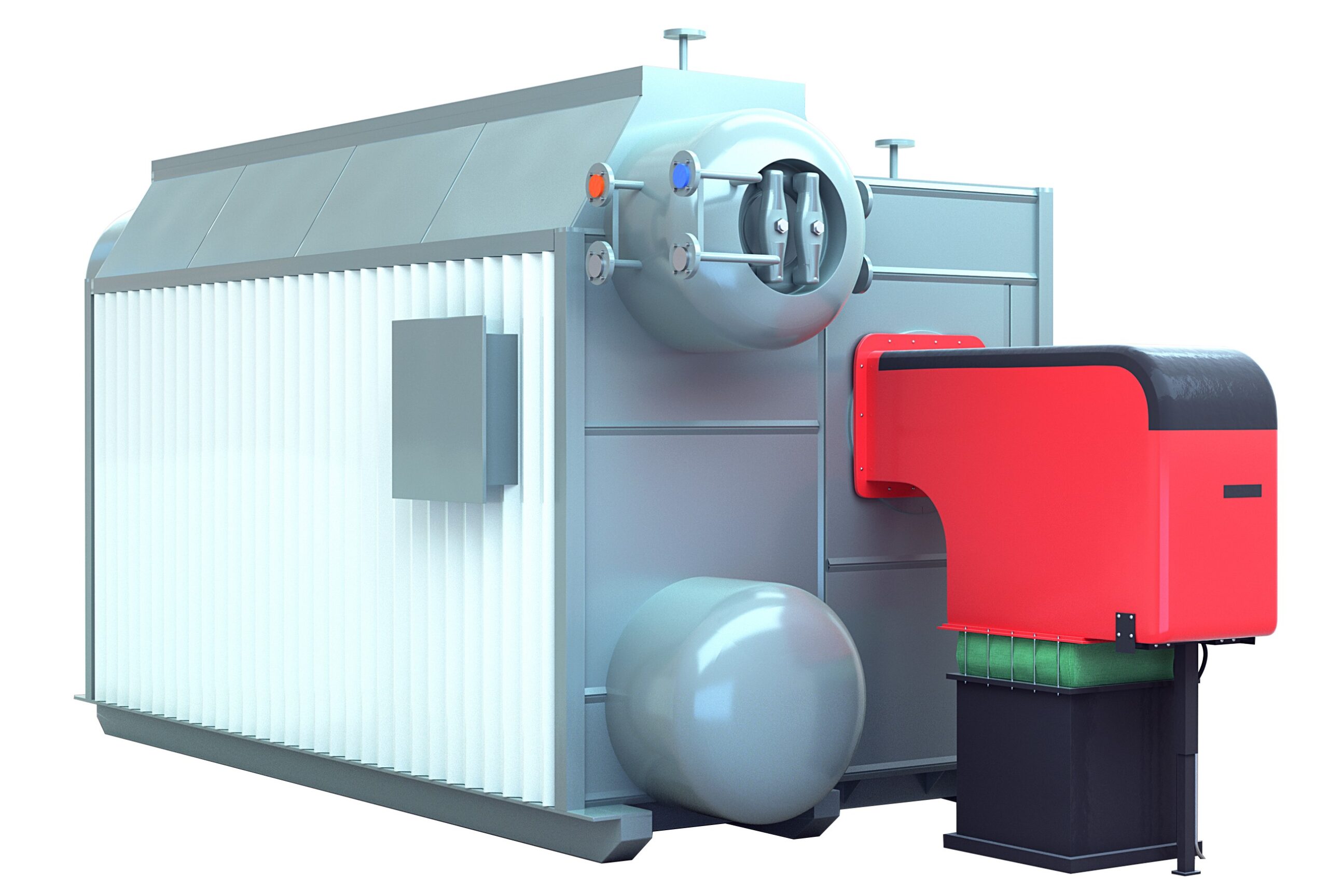
How Do Long-Term Natural Gas Prices Impact Operational Costs?
Natural gas-fired boilers are widely favored for their efficiency, cleanliness, and ease of operation, but their operating costs are largely dominated by the price of fuel. Unlike capital costs, which are one-time investments, fuel costs are continuous and represent 60–80% of total operating expenses over a system’s life. Therefore, fluctuations in natural gas prices—driven by regional supply-demand dynamics, geopolitical events, carbon markets, and weather patterns—have a direct and compounding effect on boiler operating budgets, lifecycle cost (TCO), and ROI. A stable or declining gas price supports predictability, while volatility exposes plants to sudden cost spikes.
Long-term natural gas prices significantly impact the operational costs of gas-fired boilers, as fuel accounts for the majority of their total annual expenses. A change of just $1 per MMBtu can increase or decrease operating costs by hundreds of thousands of dollars annually, depending on the boiler size and runtime. For a 10 TPH industrial boiler running year-round, fuel price variation can affect long-term costs by millions of dollars. Budgeting must include historical price trends, escalation factors, and fuel contract strategies to ensure economic stability over the system’s life.
When gas prices rise, so does every ton of steam your plant produces.
Fuel cost variation due to natural gas prices can shift operating expenses of gas boilers by over 30%.True
Natural gas accounts for the majority of a boiler's OPEX, so price shifts have a magnified budget impact.
📦 Natural Gas as a Dominant Operating Cost
| Cost Category | % of Annual Operating Budget |
|---|---|
| Natural Gas Fuel | 65–80% |
| Maintenance & Labor | 10–15% |
| Water & Chemicals | 3–5% |
| Electricity & Draft | 3–6% |
| Permits & Testing | 1–2% |
A 5% change in gas price = ~4% change in total OPEX.
🔢 Fuel Cost Calculation Formula
✅ Formula:
Annual Fuel Cost = Fuel Consumption (MMBtu/year) × Gas Price ($/MMBtu)
📊 Example: 10 TPH Boiler, 85% Efficiency
| Parameter | Value |
|---|---|
| Steam Load | 10,000 kg/h |
| Enthalpy of Steam | ~660 kcal/kg |
| Operating Hours/Year | 7,200 |
| Boiler Efficiency | 85% |
| Natural Gas CV | 1,000 kcal/Nm³ (~38.25 MJ/m³) ≈ 1.055 MMBtu/1000 ft³ |
Energy required annually =10,000 × 660 × 7,200 / 0.85 = ~55.9 billion kcal = ~222,000 MMBtu
| Gas Price ($/MMBtu) | Annual Fuel Cost |
|---|---|
| $4.00 | $888,000 |
| $6.00 | $1.33 million |
| $8.00 | $1.78 million |
A $2/MMBtu increase = ~$444,000/year extra in this example.
📈 10-Year Cost Forecast (Assuming Gas Escalation 3–5%/year)
| Year | Gas Price ($/MMBtu) | Fuel Cost (10 TPH Boiler) |
|---|---|---|
| 1 | $5.00 | ~$1.11 million |
| 3 | $5.45 | ~$1.21 million |
| 5 | $6.00 | ~$1.33 million |
| 7 | $6.60 | ~$1.46 million |
| 10 | $7.50 | ~$1.67 million |
Over 10 years: ~$13–14 million in fuel cost, depending on price behavior.
🌍 Factors Driving Long-Term Gas Price Trends
| Factor | Effect on Price |
|---|---|
| Global LNG Demand | Higher export demand = ↑ |
| Weather Patterns | Cold winters = price spikes |
| Carbon Pricing & Emissions Caps | Adds cost per MMBtu |
| Pipeline Capacity & Infrastructure | Bottlenecks = ↑ |
| Renewable Energy Displacement | May reduce peak gas demand |
Plants must model 3–5 price scenarios to avoid underbudgeting.
🛡️ Strategies to Manage Fuel Price Risk
| Strategy | Benefit |
|---|---|
| Long-term fixed price contracts | Budget certainty |
| Dual-fuel burner option (diesel backup) | Operational flexibility |
| High-efficiency boilers + economizers | Reduces MMBtu per ton steam |
| Install O₂ trim + VFDs | Optimizes combustion |
| Include escalation in LCCA | Prevents ROI underestimation |
A 10% improvement in boiler efficiency offsets $0.50–$1.00/MMBtu in fuel cost.True
Efficiency upgrades reduce total MMBtu input, providing insulation against gas price increases.
Summary
For industrial gas-fired boilers, natural gas price trends are the single largest variable affecting long-term operating cost. Over a 20-year lifespan, even modest shifts in fuel price create multimillion-dollar differences in total cost of ownership (TCO). Therefore, accurate budgeting must consider historical volatility, forecast scenarios, and strategic contracting. Efficiency upgrades, automation, and thermal recovery systems become increasingly valuable as fuel prices rise. In energy planning, gas may flow cleanly—but its cost flows straight into your bottom line.
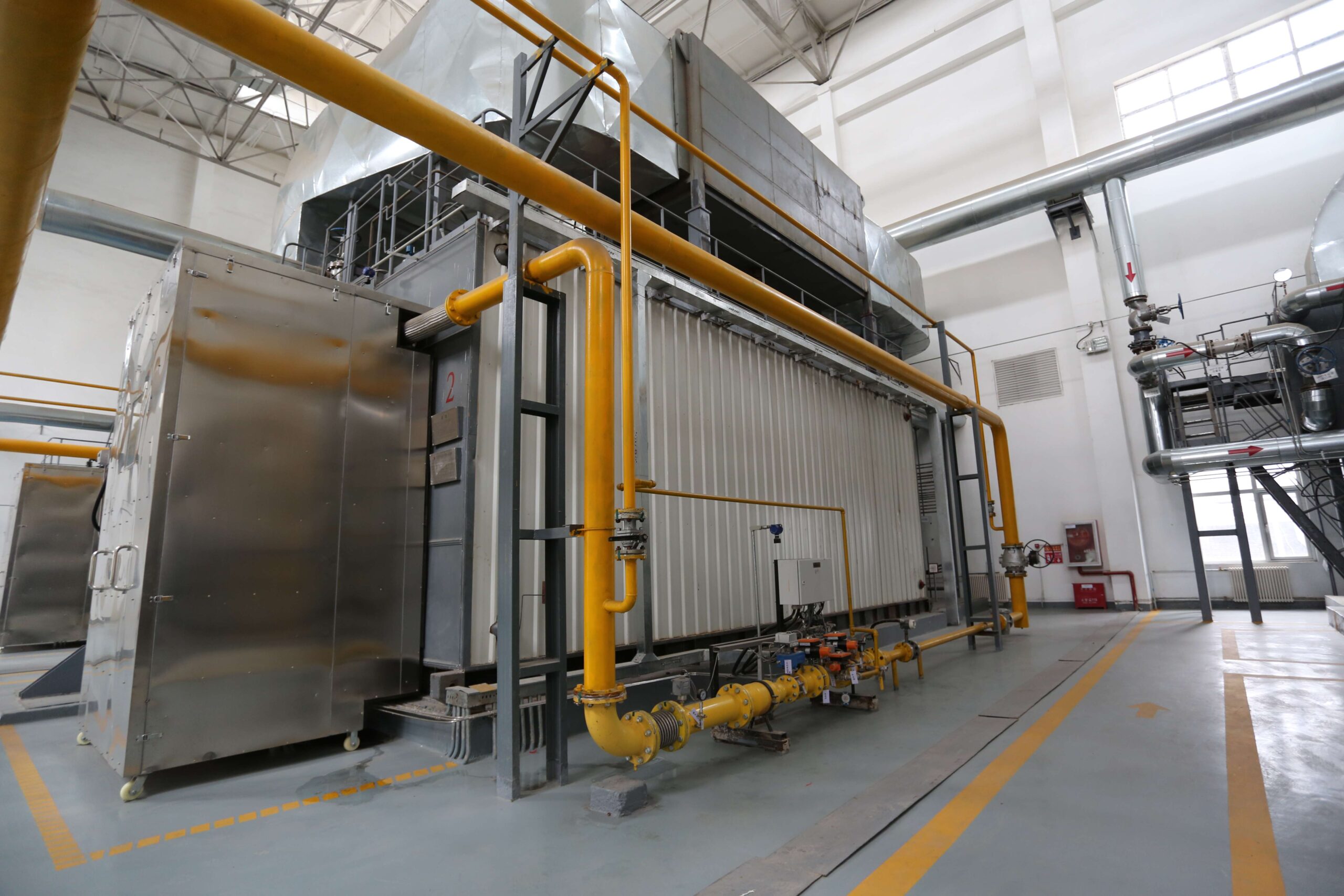
What Are the Recurring Costs for Maintenance, Inspections, and Efficiency Tuning?
Gas-fired boilers are prized for their clean combustion and low emissions, but reliable and efficient operation depends on consistent upkeep. Regular maintenance, inspection, and performance tuning are necessary to ensure fuel economy, safety, and regulatory compliance. These activities are not one-time events—they must be scheduled monthly, quarterly, and annually depending on operating hours and load factors. While gas-fired systems generally have lower O&M burdens than coal or oil systems, their recurring costs for maintenance and tuning still accumulate significantly over the system’s life and must be included in total cost of ownership (TCO) planning.
Recurring costs for maintenance, inspections, and efficiency tuning of industrial gas-fired boilers typically range from 2% to 5% of the boiler’s initial capital cost per year. These include combustion tuning, burner inspections, heat exchanger cleaning, safety device testing, control calibration, and required regulatory inspections. For a mid-sized boiler (10 TPH), this equates to $20,000–$50,000 annually, depending on plant location, hours of operation, and service contracts. Over 20 years, these costs total between $400,000 and $1 million.
Good maintenance doesn’t just fix problems—it prevents them and saves fuel.
Routine maintenance and tuning reduce fuel use by up to 5% in gas-fired boilers.True
Maintained burners and clean heat transfer surfaces allow consistent combustion efficiency and thermal output.
🧰 Key Recurring Maintenance & Inspection Tasks
| Task | Frequency | Typical Cost (USD) |
|---|---|---|
| Burner Inspection & Adjustment | Quarterly | $1,000 – $2,500 per visit |
| Combustion Tuning (Air/Fuel Ratio) | Semi-Annually | $2,000 – $4,000 |
| Flue Gas Analysis & Stack Temp Check | Quarterly | $500 – $1,000 |
| Water Chemistry Testing & Dosing Review | Monthly | $1,500 – $2,500/year |
| Heat Exchanger Tube Cleaning (if fouled) | Annually | $3,000 – $8,000 |
| PLC and Safety Interlock Check | Annually | $2,000 – $4,000 |
| ASME Pressure Vessel Inspection | Annually or Biennially | $1,000 – $3,000 |
| Emissions Compliance Testing | Annually | $1,500 – $4,000 |
| Calibration of Sensors & Controls | Annually | $1,500 – $3,000 |
Total annual routine maintenance cost = $20,000 – $50,000 for mid-sized industrial systems.
📊 20-Year Maintenance Cost Estimate by Boiler Size
| Boiler Size (TPH) | Annual O&M Estimate | 20-Year Total (USD) |
|---|---|---|
| 2–5 TPH | $10,000 – $20,000 | $200,000 – $400,000 |
| 10 TPH | $20,000 – $50,000 | $400,000 – $1,000,000 |
| 20 TPH | $40,000 – $80,000 | $800,000 – $1.6 million |
Service contract models help stabilize costs and ensure consistent technician performance.
📋 What Drives These Costs?
| Factor | Cost Impact |
|---|---|
| Run Hours per Year | More hours = more frequent servicing |
| Burner Type (low-NOx, modulating) | Higher tuning needs |
| Flue Gas Recirculation (FGR) | Requires more maintenance |
| Automation Level | More controls = more calibration tasks |
| Stack Emissions Regulation | Triggers annual compliance testing |
| Water Quality & Treatment | Poor chemistry increases tube scaling |
Overlooking water chemistry can double maintenance costs over time due to tube cleaning needs.
🧪 Benefits of Regular Efficiency Tuning
| Action | Efficiency Impact | Cost Savings Potential |
|---|---|---|
| O₂ Trim Tuning | 1–2% efficiency gain | $10,000–$30,000/year |
| Heat Exchanger Cleaning | 2–4% gain | $20,000–$60,000/year |
| Burner Optimization | 1–3% fuel savings | $15,000–$45,000/year |
| Combustion Sensor Calibration | Prevents drift | Consistent efficiency |
Regular tuning and maintenance can reduce annual fuel costs by up to 10%.True
Efficient combustion and clean transfer surfaces directly reduce gas usage per ton of steam.
Summary
Maintenance, inspections, and performance tuning for gas-fired boilers are critical recurring investments that ensure safe, clean, and efficient operation over time. For mid-size to large industrial systems, these costs can range from $20,000 to $80,000 per year, depending on load profile and compliance requirements. Though often overlooked in early budgeting, they are vital for controlling fuel usage, maintaining uptime, and passing regulatory inspections. Over a 20-year lifespan, consistent maintenance doesn’t cost you—it pays you back in fuel savings and reliability. When it comes to operational success, maintenance isn’t optional—it’s strategic.
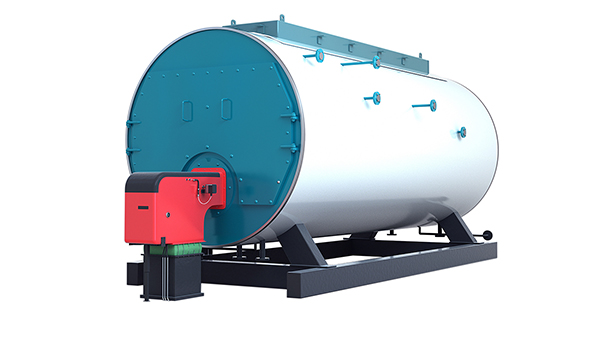
How Do Emissions Regulations and Burner Upgrades Affect Future Expenses?
As climate policies tighten and air quality standards evolve, industrial gas-fired boilers are increasingly subject to stringent emissions regulations—especially for nitrogen oxides (NOₓ), carbon monoxide (CO), and greenhouse gases (GHGs). These regulations impact long-term operating costs through mandatory compliance upgrades, reporting systems, and permit fees. One of the most effective strategies to reduce emissions is installing or upgrading to a low-NOx or ultra-low-NOx burner. While such upgrades add to initial capital costs, they can reduce emissions-related expenses, avoid fines, and extend the operational lifespan of boiler systems by maintaining regulatory compliance.
Emissions regulations and burner upgrades significantly affect future expenses for gas-fired boilers by either increasing costs through penalties and retrofits, or reducing them through early investment in low-emission technologies. As standards tighten, facilities using outdated burners may face expensive retrofits, permitting delays, or carbon-related fees. Conversely, high-efficiency low-NOx burners and automated combustion controls help minimize emissions, reduce compliance risk, and lower fuel usage—saving money over the boiler’s lifetime.
In today’s regulatory climate, staying compliant isn’t optional—it’s how you stay profitable.
Installing low-NOx burners reduces emissions compliance costs and prevents future retrofit penalties.True
Early upgrades help facilities meet or exceed tightening standards and avoid costly enforcement or unplanned retrofits.
📋 Key Emissions Regulated in Gas-Fired Boilers
| Pollutant | Source | Regulatory Limit (Typical) |
|---|---|---|
| NOₓ (Nitrogen Oxides) | High-temp combustion | 30–100 ppm (U.S. EPA, EU BREF) |
| CO (Carbon Monoxide) | Incomplete combustion | ≤ 100 ppm |
| CO₂ (Carbon Dioxide) | Fossil fuel combustion | Often taxed (per ton) |
| Formaldehyde, VOCs | From non-methane hydrocarbons | Regulated in some areas |
Natural gas burns cleaner than coal or oil, but NOₓ and CO can still exceed permit thresholds without proper control.
🔧 How Burner Upgrades Help
| Upgrade Type | Benefit | Cost Estimate (USD) |
|---|---|---|
| Low-NOx Burner | Cuts NOₓ by 50–70% | $40,000 – $90,000 |
| Ultra-Low-NOx Burner (<9 ppm) | Complies with strictest U.S./EU regs | $60,000 – $120,000 |
| O₂ Trim System + VFD Fans | Improves combustion, reduces NOₓ | $15,000 – $30,000 |
| Flue Gas Recirculation (FGR) | Further NOₓ reduction | $25,000 – $50,000 |
Upgrading burner + controls can improve fuel efficiency by 2–5% while achieving compliance.
📊 Cost Comparison: With vs. Without Burner Upgrade (20-Year Lifecycle)
| Cost Category | Non-Compliant Burner | Low-NOx Upgrade System |
|---|---|---|
| Initial CAPEX | $900,000 | $1,000,000 |
| NOₓ Penalties/Fees (avg) | $5,000/year | $0 |
| Permit Delays & Audits | $3,000/year | Minimal |
| Fuel Efficiency (Annual Cost) | $1.35M (85%) | $1.25M (90%) |
| Total TCO (20 Years) | $29.6M | $26.5M |
| Payback from Fuel & Avoided Fees | — | ~2.8 years |
Low-NOx burner systems can reduce lifecycle costs by over $3 million through improved efficiency and emissions avoidance.True
Fuel savings and the elimination of emissions-related fees make advanced burners cost-effective over time.
🧪 What Happens If You Delay Burner Upgrades?
| Consequence | Potential Cost Impact |
|---|---|
| Non-compliance Fines | $5,000–$25,000 per violation |
| Forced Retrofitting | $50,000 – $150,000 unplanned cost |
| Permitting Delays | Lost steam availability and revenue |
| Carbon Tax Exposure | $20–$50/ton CO₂, rising annually |
| Reduced Asset Value | May prevent resale or plant transfer |
Regulations rarely get looser—planning for stricter standards is financially safer.
📈 Policy Trends Influencing Future Costs
| Policy Direction | Impact on Gas Boiler Costs |
|---|---|
| Lower NOₓ limits (<30 ppm) | Increases need for ultra-low-NOx burners |
| Carbon taxes and CO₂ reporting | Adds operating cost per MMBtu burned |
| Mandatory CEMS for mid-size units | Adds $40,000–$100,000 in equipment |
| Energy efficiency incentives | Rebates for upgrades, ROI boost |
| Green certification (ISO 50001, LEED) | Rewards clean boiler performance |
Anticipating these trends helps maintain compliance without surprise capital hits.
Summary
Emissions regulations and burner upgrade decisions are directly tied to future operating costs for gas-fired boilers. While delaying upgrades may reduce today’s budget, it increases the risk of penalties, emergency retrofits, and higher fuel bills tomorrow. Proactively adopting low-NOx or ultra-low-NOx burners, O₂ trim, and smart combustion control not only ensures compliance but also improves efficiency and long-term ROI. In the evolving landscape of environmental regulation, forward-thinking boiler decisions aren’t just compliant—they’re financially strategic.
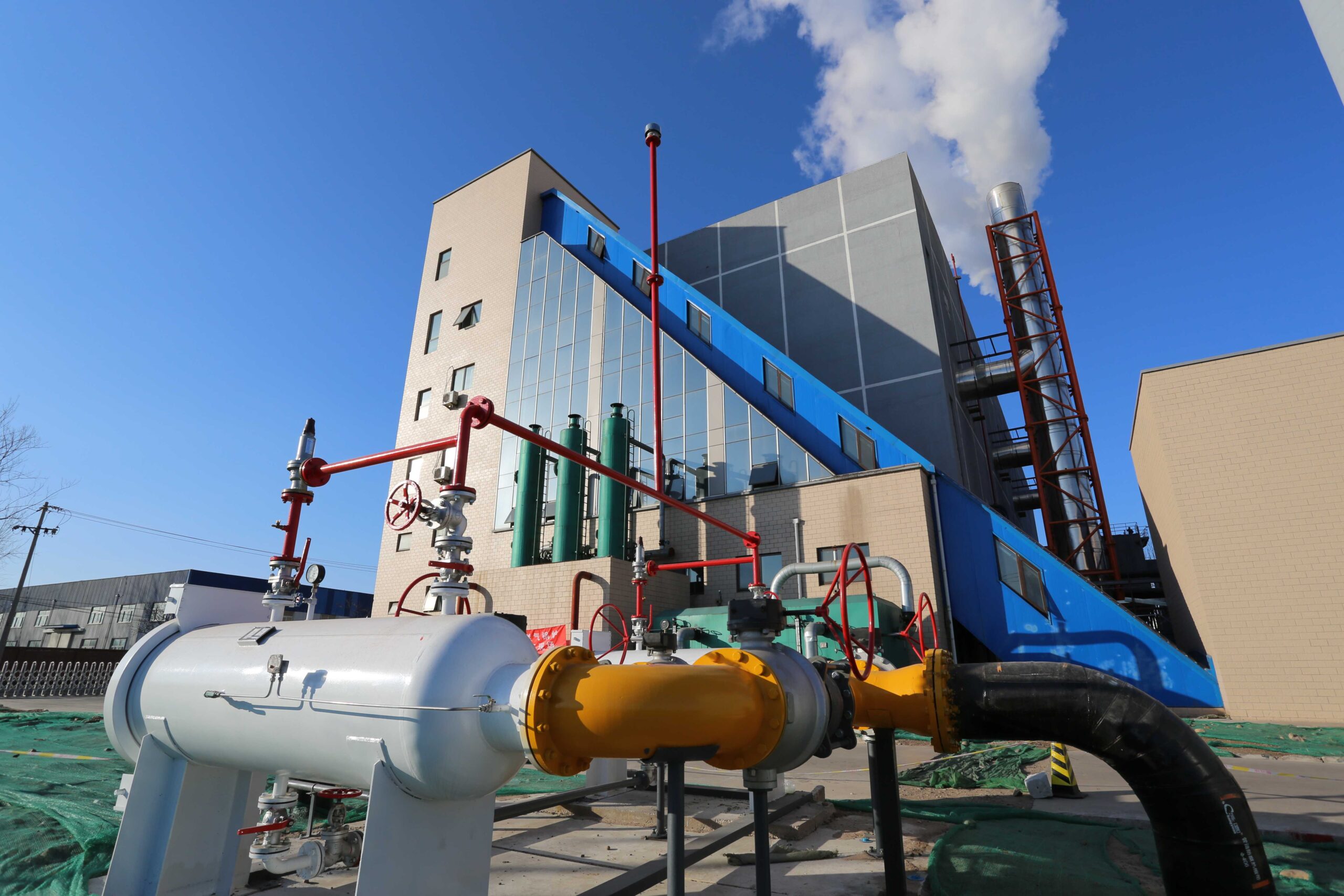
How Can Lifecycle Cost (TCO) and Payback Period Be Calculated for Better Decision-Making?
When selecting a gas-fired boiler for an industrial facility, the choice shouldn’t be made based on initial price alone. While capital cost is important, the true financial value of a boiler investment emerges over time through fuel consumption, maintenance, efficiency, and emissions compliance. That’s why decision-makers use Lifecycle Cost (TCO) and Payback Period analysis to evaluate long-term cost-effectiveness and economic feasibility. These tools provide insight into which boiler delivers the lowest total cost and fastest return, guiding smarter investment and procurement strategies.
Lifecycle Cost (TCO) is calculated by summing all capital and operating expenses over the expected service life of a gas-fired boiler, including purchase, installation, fuel, maintenance, water treatment, inspections, emissions compliance, and decommissioning. Payback Period is calculated by dividing the initial extra investment by the annual savings (usually from fuel efficiency or reduced maintenance). Together, these calculations reveal which option offers the best long-term value and fastest cost recovery, helping industrial buyers make more informed, financially sound decisions.
Don’t just buy the cheaper boiler—buy the one that costs less to own and operate.
Lifecycle cost and payback analysis are critical for evaluating the long-term value of industrial gas-fired boiler investments.True
They include operating expenses and fuel savings that significantly outweigh the initial purchase price over time.
📦 Lifecycle Cost (TCO) Formula for Gas-Fired Boilers
TCO = CAPEX + ∑ (Fuel + Maintenance + Water + Labor + Compliance + Downtime + Decommissioning)
| Cost Category | Description |
|---|---|
| CAPEX | Boiler unit + installation + auxiliaries |
| Fuel Costs | Largest OPEX, based on MMBtu use and gas price |
| Maintenance & Inspections | Annual servicing, cleaning, tuning |
| Water & Chemicals | Feedwater treatment, softening, blowdown |
| Labor & Operations | Operator shifts and training |
| Emissions & Permits | Annual testing, NOₓ limits, compliance |
| Downtime/Repairs | Unscheduled outage losses |
| Decommissioning | Removal, disposal, environmental closure |
🧮 Example: TCO for 10 TPH Gas-Fired Boiler (20-Year Model)
| Cost Component | Annual Estimate (USD) | 20-Year Total (USD) |
|---|---|---|
| CAPEX (Boiler + Install) | — | $900,000 |
| Fuel (220,000 MMBtu/year @ $6/MMBtu) | $1.32 million | $26.4 million |
| Maintenance & Inspections | $35,000 | $700,000 |
| Water & Chemicals | $10,000 | $200,000 |
| Labor | $20,000 | $400,000 |
| Compliance & Permits | $8,000 | $160,000 |
| Downtime (conservatively) | $15,000 | $300,000 |
| Decommissioning | — | $100,000 |
| Total TCO (20 Years) | — | ~$29.16 million |
Fuel accounts for ~90% of the lifecycle cost, emphasizing efficiency’s importance.
📈 Payback Period Formula
Payback Period = Extra Investment / Annual Cost Savings
| Scenario | Standard Unit | High-Efficiency Unit |
|---|---|---|
| CAPEX | $900,000 | $1,050,000 |
| Efficiency | 85% | 92% |
| Annual Fuel Use | 220,000 MMBtu | 203,300 MMBtu |
| Fuel Price | $6/MMBtu | $6/MMBtu |
| Annual Fuel Cost | $1.32M | $1.22M |
| Annual Savings | — | $100,200 |
| Extra Investment | — | $150,000 |
Payback = $150,000 / $100,200 = **1.5 years**
A short payback (under 3 years) signals a strong, low-risk investment.
📊 Side-by-Side TCO & Payback Comparison
| Metric | Standard Boiler | High-Efficiency Boiler |
|---|---|---|
| CAPEX | $900,000 | $1,050,000 |
| Fuel Cost (20 Years) | $26.4M | $24.4M |
| Maintenance & Labor | $1.1M | $950,000 |
| Total TCO | $29.16M | $27.45M |
| Payback Period | — | 1.5 years |
| ROI (20-Year) | — | 1,200% |
High-efficiency gas-fired boilers can return their investment premium within 2 years through fuel savings alone.True
The reduced MMBtu input quickly offsets the higher purchase cost in most industrial applications.
📋 Tips for Accurate TCO and Payback Modeling
| Best Practice | Why It Matters |
|---|---|
| Use realistic fuel escalation rates | Avoids underestimating future fuel spend |
| Include emissions and permit fees | Often overlooked cost component |
| Model different load scenarios | Captures part-load vs. full-load impact |
| Consult both finance and operations | Balances budgets with real-world usage |
| Discount future costs to present value | More accurate investment modeling |
Use a 4–7% discount rate to calculate net present value (NPV) of future costs if comparing project alternatives.
Summary
Lifecycle cost (TCO) and payback period calculations are foundational tools for evaluating the true cost and return on a gas-fired boiler investment. While upfront prices are easy to compare, the real value lies in 20+ years of operation, fuel usage, maintenance, and efficiency performance. Accurate modeling reveals which system delivers superior long-term performance at the lowest total cost, supporting financially sound decision-making. In boiler selection, a smart investment today keeps saving you tomorrow—and every day after that.
🔍 Conclusion
While gas-fired boilers generally offer lower installation and maintenance costs, they require careful evaluation of fuel expenses and long-term efficiency to ensure maximum ROI. With proper planning, combustion optimization, and regular maintenance, these systems deliver reliable, low-emission steam generation at a competitive cost. A comprehensive lifecycle cost analysis helps you select a solution that balances performance, cost, and regulatory compliance.
📞 Contact Us
💡 Need help analyzing the true cost of your gas-fired boiler investment? Our team offers TCO assessments, performance optimization, and cost forecasting to help you make a confident decision.
🔹 Reach out today and make your gas-fired boiler investment efficient, economical, and future-ready! 🔥💰📉
FAQ
What is the average upfront cost of an industrial gas-fired boiler?
Upfront costs typically range from $70,000 to $500,000+, depending on size (measured in BTU/hr or TPH), pressure rating, and whether it includes low-NOx burners or condensing technology. Installation adds $40,000–$250,000, covering setup, controls, and piping.
What are the long-term fuel costs for gas-fired boilers?
Natural gas is cost-effective and clean-burning.
Price: Typically $6–$12 per MMBtu
A mid-size boiler running 24/7 can incur $250,000–$1M+ annually in gas costs, depending on usage hours and efficiency
High-efficiency and condensing models can reduce fuel use by 5–10%.
How much does maintenance cost over the life of the boiler?
Annual maintenance averages 2–4% of the capital cost. Over a 20–25 year lifespan, total maintenance can range from $100,000 to $400,000, covering:
Burner inspections and cleaning
Heat exchanger surface cleaning
Valve/gasket replacements
Control system calibration
Are there hidden or indirect costs?
Yes, these may include:
Emissions compliance upgrades (e.g., ultra-low NOx burners)
Water treatment systems
Operator training or certification
Permitting and insurance
Boiler blowdown and condensate return systems
How do gas-fired boilers compare in lifecycle cost?
Gas-fired boilers offer a balanced total cost of ownership (TCO):
Moderate upfront cost
Low maintenance burden
Efficient fuel use with clean combustion
When combined with heat recovery (economizers, condensers), they deliver long-term savings and high environmental compliance with minimal retrofitting.
References
Industrial Boiler Cost Overview – https://www.energy.gov
Natural Gas Price and Forecast – https://www.eia.gov
Installation Cost and System Integration – https://www.sciencedirect.com
Gas Boiler Fuel Efficiency and Consumption – https://www.researchgate.net
Maintenance Planning for Gas Boilers – https://www.epa.gov
Emission Compliance Costs in Gas Systems – https://www.bioenergyconsult.com
Condensing Boiler Lifecycle Savings – https://www.mdpi.com
IEA Report on Natural Gas Boiler Trends – https://www.iea.org
Boiler Efficiency and Heat Recovery Integration – https://www.energysavingtrust.org.uk
ASME Standards for Industrial Gas Boilers – https://www.asme.org

